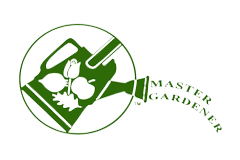What you Need to Know
- All earthworms in Ontario are non-native and harm the environment.
- However, invasive Jumping Worms (JWs) cause much more damage & spread much more quickly. They can kill plants by removing nutrients from the soil, and leave behind bare, dry granular pellets. They are a threat to our gardens & lawns, farms & forests, as well as bird and animal life.
- Invasive Jumping Worms have been confirmed in Ontario during the summer of 2021 (Dundas Valley, Toronto, Windsor).

- There are currently no controls or pesticides to stop Jumping Worms once they are in a garden or natural area. Early detection and rapid response are critical. You can make a difference!
- People spread worms without realizing it. JW egg cases (cocoons) can be in soil, mulch, plants, landscaping equipment and in even the treads of shoes and tires. One cocoon or worm is enough to infest a garden.
- Life Cycle & ID: Plants and soil sold in spring may not show evidence of JWs. Cocoons hatch when soil temperatures reach 10°C/50°F. Cocoons are the size of a poppy seed and JWs will be tiny. When JWs mature in late summer, it’s easier to tell them apart from other earthworms. This may be the best time to inspect plants and gardens.
- Although jumping worms are a major threat, don’t let that fear or their presence overwhelm you. Do your part to limit their spread, enjoy your garden and support research. Report sightings of JWs at Ontario’s Early Detection & Distribution Mapping System https://www.eddmaps.org/.

Stopping the Spread of JWs in Your Garden
- Grow your own plants from seed whenever possible.
- Make your own compost or leaf mulch.
- Buy plants and garden products from reputable sources. Bulk mulch or compost must be heat-treated to a temperature of at least 40°C/104°F for at least 3 days to destroy the cocoons. Ask nurseries, landscaping companies and soil, compost and mulch providers how they are controlling JWs. If they know nothing about JWs, then be concerned and share information with them.
- It is possible for bagged mulch or soil to be contaminated. Gardeners may want to treat purchased soil or mulch with solarization before using. (See page 3)
- Be aware that even municipal compost may also be a source of cocoons or worms.
- When visiting private gardens, botanical gardens or trails, arrive clean and leave clean. Use a brush to remove soil and debris on footwear. Park on paved areas where possible.
Introducing New Plants to Your Garden
- Isolate and inspect all plants before you add them to your garden. Is the soil intact or granular? Intact soil is likely OK. Granular soil may indicate the presence of JWs.
- If you get a plant before July, you may want to keep the plant in its pot until JWs are more easily identified.
- Plants can also be root washed to remove JWs and cocoons. Gently rinse plants in a basin to remove all soil. Place soil and water in sealed plastic bags set out in the sun. If thoroughly solarized in a minimum of 40°C/104°F temperatures for at least 3 days, the soil should be safe to re-use in the garden.
Testing for JWs
If you think you have JWs, you can follow these instructions to test your soil:
Note: This test is most useful later in the summer, when JWs are mature and can be distinguished from other earthworms. It can be done in suspected garden areas or with purchased potted plants.
- Mix 1/3 cup ground mustard seed in 4.5 liters (1 gallon) of water.
- Brush away any leaves or mulch on top of the soil.
- Slowly pour the mustard solution onto the soil. The solution irritates worms and sends them to the surface. All earthworms will react, but look for the white clitellum of the mature JWs and remove the worms as they appear. If you are not sure, it is safest to dispose of all of the earthworms.
- Destroy all JWs as described in the next section.
- If JWs are confirmed, consider solarizing the soil as described in the next section.
In late summer, Jumping Worms will develop a light band (clitellum) near their head. If agitated, JWs can drop their tail. JWs thrash wildly from side to side. No other earthworms have these three features.
Jumping Worm & Cocoon Treatment
- Kill suspected JWs by freezing, leaving in a bag out in the sun, or soaking in vinegar or rubbing alcohol. Discard in garbage. Do not put JWs in any compost pile, garden or natural lands.
- Cocoons can survive temperatures of -40°C/-40˚F so winter temperatures do not kill them. Heat treatment of 40°C/104°F is currently the only known method of killing cocoons.
Treating Infested Soil
- Solarize isolated infestations in the garden: Cover moistened soil with clear plastic for a minimum of 2 to 3 weeks. Time will vary according to conditions, but the soil temperature needs to exceed 40°C/104°F for at least 3 days.
- Bagging soil: Remove soil and place in sealed plastic bags then set out in the sun. If thoroughly solarized in a minimum of 40°C/104°F temperatures for at least 3 days, the soil should be safe to re-use in the garden. You can also use this method to treat purchased mulch or compost.
- Disposal: Many municipalities do not allow soil to be disposed of in the garbage. There is concern that moving infested soil or disposing of it soil in municipal waste may increase the spread of JWs.
For more information click on this link or scan the QR code.
Cover Image: University of Minnesota Extension



